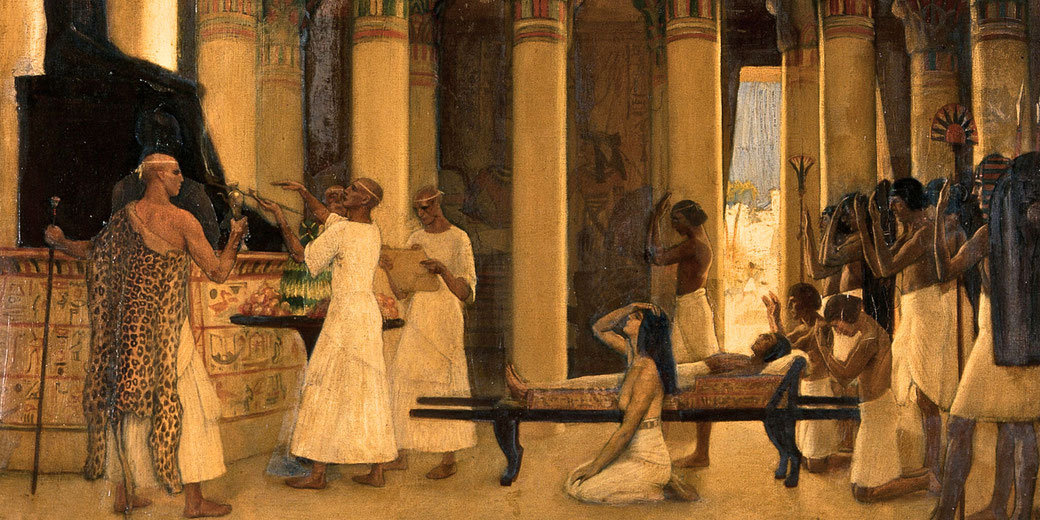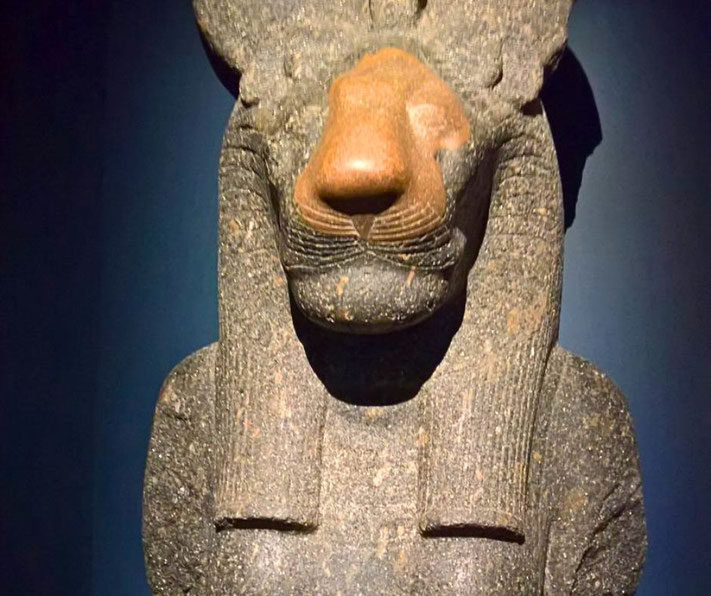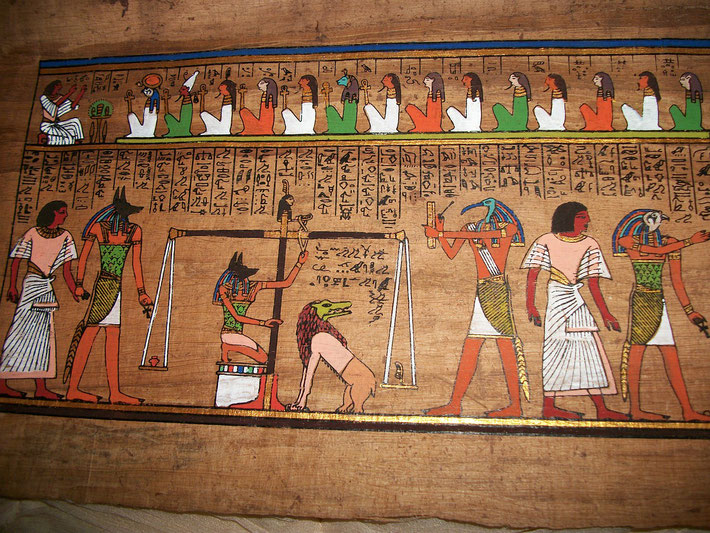Overview of Egyptian gods and the afterlife

Judged by the balance of their heart against a feather, a newly dead soul of an ancient Egyptian was thought to face a terrifying moment when the gods would decide whether they would face eternal paradise or complete destruction.
This is just one of many religious beliefs that influenced the daily lives of ancient Egyptians for thousands of years.
For us, we can glimpse just a part of the fears and joys they felt in response to their gods through the curious evidence they have left behind.
We know a lot about what the ancient Egyptians believed because so many temples, shrines and religious items have survived from their time.
These show us that the belief in the supernatural was significant in everyday Egyptian life.
Unlike much of the world today, Egyptian society was polytheistic, meaning that its people believed in worshipping more than one god.
In fact, historians still do not know exactly how many gods the Egyptians worshipped, as evidence exists for hundreds of different deities.
The most famous gods include Ra, Osiris, Seth, Isis, Anubis and Horus. Even the pharaoh himself was considered to be the god Horus during his reign, and after his death, Egyptians believed he became the god Osiris in the afterlife.

Egyptian gods explained
Each Egyptian god was believed to hold power over different parts of the natural world. For example, Ra governed the sun.
Other kinds of gods were considered sacred to particular cities, villages or regions (called nomes). For instance, Amun served as the chief god of Thebes.
Unlike modern belief systems, ancient Egyptians did not separate religion from daily life.
Instead, they thought that the wind on their skin was a god, and they saw the waters of the Nile as a kind of god as well.
As a result, religious belief was experienced on a personal level by many people on a regular basis.
Egyptians thought that the gods determined the seasons, the harvests and an individual’s journey through life (otherwise known as their ‘fate’).
Therefore, they believed that pleasing the gods through regular sacrifices and rituals would guarantee them prosperity.
One feature of Egyptian gods involved their half-human, half-animal forms.
Egyptians believed that certain animal traits could illustrate a god’s character.
For example, if a god was believed to be dangerous or powerful in battle, artists depicted the deity as part lion.
As a result, birds, lions, cats, crocodiles and dogs frequently appeared in divine imagery.

The role of temples
Because gods existed in every aspect of Egyptian life, temples and priesthoods gained quite a bit of social significance.
Egyptians believed that a priest’s duties secured the nation’s success. Technically speaking, the pharaoh was the high priest of all temples and was expected to perform rituals to appease the gods.
For this reason, each town contained numerous temples devoted to different deities.
Since each god oversaw a distinct aspect of life or nature, worshippers wanted to honour as many deities as possible.

Some of the most famous gods and goddesses
While hundreds of deities existed, they sometimes shared areas of influence.
Below is a list of the most famous gods and goddesses from ancient Egypt:
| Name of god/dess | What it was believed they did | How they were depicted |
| Taweret | She protected women during childbirth | Half woman, half hippopotamus |
| Sekhmet | She was a goddess of war | Half woman, half lioness |
| Hathor | Love and beauty | Half woman, half cow |
| Anubis | God of the underworld and mummification | Half man, half jackal |
| Horus | God of the sky and hunting. Also, the pharaoh was considered to be Horus while on earth. Horus' sacred city was Memphis. | Half man, half falcon |
| Isis | Goddess of the afterlife and protector of the dead | Woman with the image of a throne on her head |
| Osiris | God of mummification and the underworld | Man with green skin with mummy wrappings |
| Thoth | God of writing, wisdom, and learning | Half man, half ibis |
| Ra | God of creation and the sun | Half man, half falcon |
| Amun | God of the air. His sacred city was Thebes. | Man with two large feathers on his head |
| Ma'at | Goddess of justice and social order | Woman with a white feather on her head |
The afterlife
Egyptians were deeply interested in what happened to them after death. The decorated tomb walls help us see what they imagined the afterlife was like.
It appears that they saw it as a continuation of what life was like on earth. For example, paintings depict the dead person farming, playing sports and enjoying a regular family life.
However, ancient Egyptians believed that their behaviour during their time on earth determined their chances during the divine judgement after death.
Specifically, people who led honest lives qualified for a positive afterlife. Egyptians also believed that the body required preservation in order to live on after death.
Because of this, they perfected mummification techniques to prevent they body’s natural process of decay.
Once mummified, and believing that the body would last forever, the Egyptians thought that it also needed food, drink, tools and servants in the next world.
Therefore, they buried the dead with lots of grave goods.
When a person finally passed away, Egyptians believed that gods gathered their soul in the Hall of Truths for their judgement.
During this ceremony, Anubis, god of the dead, weighed the deceased’s heart against a feather.
If the heart proved lighter than the feather, which meant that they had an absence of guilt from mistakes and crimes committed, the deceased entered the afterlife.
If the heart was weighed down by their guilt and failures, the half-lion, half-crocodile monster Ammit devoured the soul.
This would destroy them forever.

What do you need help with?
Download ready-to-use digital learning resources
Copyright © History Skills 2014-2025.
Contact via email
With the exception of links to external sites, some historical sources and extracts from specific publications, all content on this website is copyrighted by History Skills. This content may not be copied, republished or redistributed without written permission from the website creator. Please use the Contact page to obtain relevant permission.





